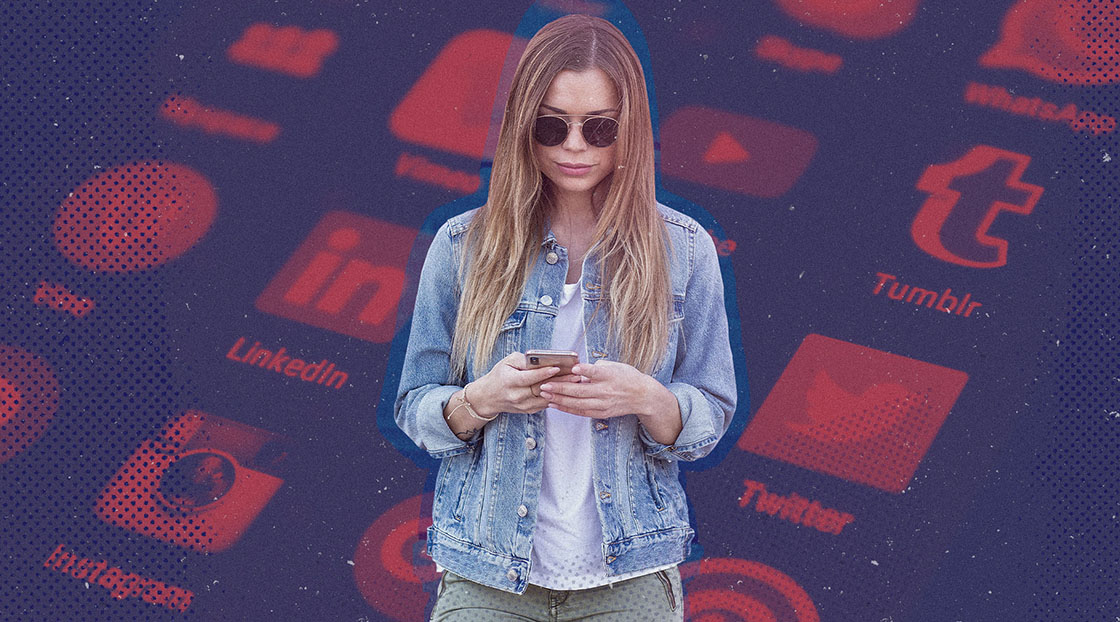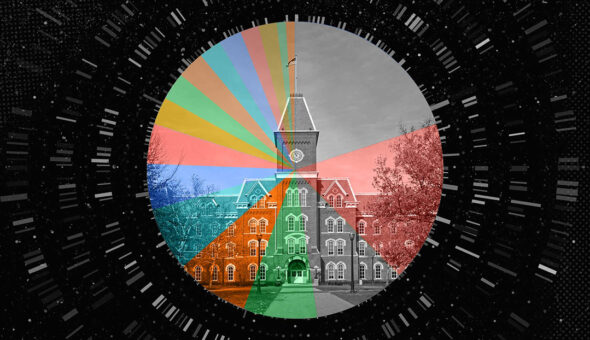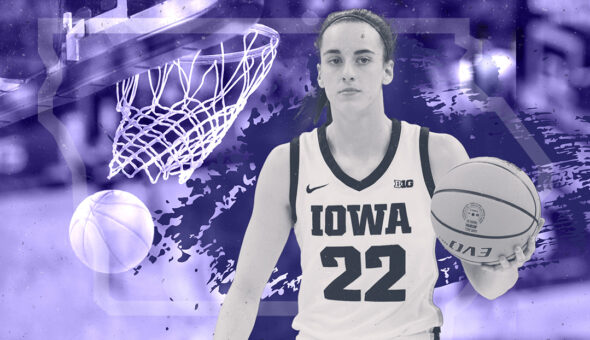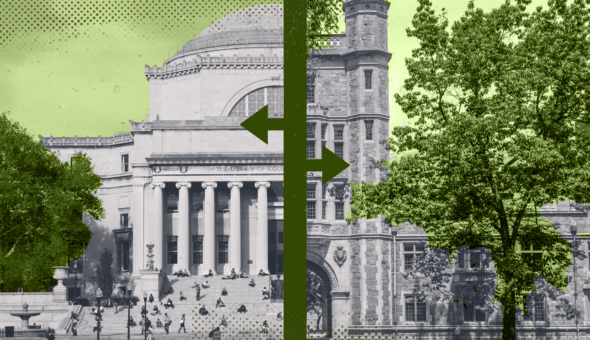Social media influencers have become ubiquitous in marketing, and their influence has been felt in higher ed marketing, too. Colleges and universities have used student ambassadors as part of their recruitment efforts forever, and many are now expanding those traditional efforts into social media influencer partnerships that leverage their students’ expertise and followings, primarily on TikTok and Instagram.
In this week’s Higher Voltage, we explore the different kinds of agreements and compensation schools offer these students, the guidelines and safeguards they put in place, and the importance of leveraging these authentic voices and their digital savvy to help show prospective students what their life on campus (IRL or virtual) can look like. All of that, plus how you might just stumble your way into 30 pounds of oatmeal on any given day.
Our Guests
- Carly McCarthy Hollowell is the Social Media Manager at the University of Central Florida and manages the university’s social media ambassador program.
- Madeline Roberts Pyle is the Director of Communications at her alma mater, Lyon College, and also manages her school’s social media ambassador program.
Our Host
Heather Dotchel is the host of Higher Voltage. She is a Philadelphia-based higher ed marketing professional who most recently led two area colleges as their chief marketing officer.
Here are some notes and links to resources discussed during the show, or relevant to the conversation:
- Carly recommends Cinebody as a great UGC video production platform.
- Madeline has found membership and support from networking groups like PRSA invaluable.
- Two schools that Carly and Madeline says are doing a great job with their student influencer programs? University of Delaware and University of Georgia.
- We wrapped up by asking each guest about a fun social media account that has nothing to do with higher ed. Madeline recommends Cats of Instagram while Carly recommends DIY influencer Angela Rose Home.
Read the Complete Transcript
Heather Dotchel:
Hello, and welcome to Higher Voltage, a podcast that explores the ins and outs of higher education marketing and touches on all aspects of the business of higher education. My name is Heather Dotchel. You have most recently encountered me leading the marketing and communications teams at two Philadelphia area colleges. Welcome to Higher Voltage. Today we’re talking about the modern landscape of digital student ambassadors. Colleges and universities have been using student ambassadors as part of their recruitment efforts forever. But partnering with them virtually is a much newer playing field and the rise of social media influencers changes that game, creating new opportunities and pitfalls. Whether we are evolving the traditional student ambassador role to a digital one, complete with testimonials and takeovers, or waiting into hiring known social media influencers to promote our institutions, no program looks exactly the same nor does it stay the same over time.
Heather Dotchel:
Our guests today have worked with their college students in official capacity, both the influencers and ambassadors, and are here to share their experience, expertise and advice. Carly McCarthy Hollowell is a social media communications and marketing specialist with expertise in content strategy, execution, and influencer strategy in higher education working to increase communications and engage with target audiences. She currently serves as a social media manager at the University of Central Florida, where she leads the institution’s social media strategy, manages the university’s main social channels, and the university’s social media ambassador program.
Heather Dotchel:
Madeline Roberts Pyle joins us from Batesville, Arkansas, where she is the director of communications at her alma mater, Lyon College. She is a public relations professional with a passion for developing effective communication strategies. She believes social media is invaluable in connecting with key audiences like students. Carly, can you give us some more depth about your path to and role of social media manager?
Carly McCarthy Hollowell:
Sure. I graduated from UCF with my Bachelor’s Degree in Event Management and a minor in marketing back in 2014 and I recently just graduated with my Master’s Degree from UCF in Interdisciplinary Studies with a focus in Corporate Communication and Digital Media. After graduating, I went to work at a local radio station where I had many roles, many hats where I got to kind of explore social media, photography, graphic design, and kind of just engage more of my skills in those areas. And when an opportunity came at UCF to be a social media coordinator, I jumped on that immediately and went to go work at my alma mater. Since then I have been promoted to social media manager in 2018, and I’ve been growing the UCF brand channels ever since and expanding our reach through our social media masters also since 2018.
Heather Dotchel:
Great. Madeline, tell us more about Lyon College and how you came to head their communications outfit.
Madeline Roberts Pyle:
Sure, Heather. Thank you for having me here today. Lyon College is a small liberal arts college in rural Arkansas. I’m from Arkansas originally and I chose Lyon because it offered a tight knit community while also being far enough away from my home and my parents. I graduated in 2015 with a Degree in English with a journalism concentration, and I went on to complete my Master’s in Applied Communication Studies in 2018. I was a social media specialist for Timex, the watch company, for about two years and after completing my masters I had the opportunity to return to Lyon as the associate director of communications and I took it.
Madeline Roberts Pyle:
In that time, I developed the Lyon College Influencers program and worked on the college’s social media content strategy. Back in March, I was promoted to the director of communications and it has been baptism by fire ever since because it happened right as the pandemic started. I still oversee the influencers program and content strategy, but I also focus on external and internal communications, which actually goes hand in hand with content strategy quite well.
Heather Dotchel:
Let’s start by defining the difference between a student ambassador and contracting with an influencer.
Carly McCarthy Hollowell:
At UCF we use more of a student ambassador role which tends to lean more towards students that are passionate about the university. They’re passionate about sharing their experiences. They’re already comfortable or semi-comfortable in front of the camera and are willing to work with the university. And more contracting with an influencer is putting pen to paper and paying them, which we don’t do with our student ambassador program. We started our program out a little bit more where we were looking for students that already had that following. They already had a base of like-minded individuals and that wasn’t the right route for us and it wasn’t sustainable for us. So we went to more of the student ambassador route where we could kind of curate a little bit about what they’re saying on their channels about the university, but also have them kind of in our back pockets to be able to help elevate university messages through university channels and through student voices.
Heather Dotchel:
Carly, that’s a good difference between the two. Can you talk a little bit more though with your program where it started with the influencers?
Carly McCarthy Hollowell:
At UCF, we started our student ambassador program kind of leaning more into the influencer strategy and honing in on the students that have a following already. We first reached out to one of our students, Louie, just found through YouTube. She was already sharing her experiences of college move and how she got into UCF, all of these different stories. So she was already telling that story. So how can we make that work for the university and make sure that our messages are aligning from the university standard and through student channels? So we first reached out to her. She was excited to work with us. We didn’t contract or pay her or anything like that.
Carly McCarthy Hollowell:
She was just excited to be given an opportunity to grow in what she’s doing and work within the communications and marketing division and for more opportunities. We reached out to her more for, “Hey, we have this marketing video shoot, do you want to be a face in it? Do you want an opportunity to be in front of the camera and work with professionals in this field,” as this is something that she wants to do and that was good enough for her and it was kind of like a nice mutual relationship where you’re going to share this on your social media channels anyways, let’s work with the university and make sure that it’s benefiting both of us and being able to kind of tag into that.
Carly McCarthy Hollowell:
So it’s kind of where we started it. Again, finding more ambassadors or influencers by seeing what people are saying on YouTube about us. If they are already kind of creating that content, then we know they have an interest in this, what we’re trying to create at the university. So, even like going on Instagram on geotag locations and stuff, and a lot of it was just us sliding into their DMs and being like, “Hey, we love what you’re doing, let’s work together.” And that’s kind of where it all started. And it wasn’t until recently that we actually did our first call on social media for ambassadors. And now our ambassadors are more engaged and more involved than ever and we’re getting weekly questions about, “How can I be an ambassador? I want to be involved.” And I think especially just during the pandemic, they’re even more just looking for a way to get involved in that student interaction with the university.
Heather Dotchel:
Great. Madeline, how does your program look? Is it similar to Carly’s or do you have some key differences?
Madeline Roberts Pyle:
It is similar to Carly’s. We started looking into this program last year and we are in rural Arkansas, so we don’t really have access to famous influencers really. So for us, from the get go it was finding students who had prospective student audiences. So like friends from your high schools. It wasn’t really a requirement that they had to have a certain number of followers. We focused more on the quality of those followers. And by that, I mean, do they have a lot of high school students following them basically? And anyway, we actually started ours as an application process. We put it out on social media. They had to fill out an application. The final candidates went through an interview process and we ended up selecting five influencers and the main goals were us promoting their content and them promoting us.
Madeline Roberts Pyle:
And what we were trying to do is by promoting them on our social media channels and using their content, that we could have prospective students want to check out the influencers because looking at some of the research, especially for Gen Z, they do not want to look at marketing materials. They want to hear from their peers about what the college experience is like. So we promoted our influencers as a way for people interested in Lyon College to check out the Lyon experience firsthand. The first year we did it, which was last year, was we made it more like a competition and we had the influencers submit engagement reports. We used Google Analytics to give them each a specific link that they would put in their bio and we would use that to measure how often people were checking them out, stuff like that.
Madeline Roberts Pyle:
However, we’ve moved away from the competition aspect because that now means that we have more resources just to focus on spoiling all of the influencers because the perks for them is that we promote them, they get to call themselves the official Lyon College influencers and similar to what Carly was describing, they have access to events. They get to be in photo shoots and that’s beneficial for us because sometimes it’s hard to find students that are interested in participating in those things. So yeah, they love social media and this is just a chance for them to develop their own brand even more so and increase their following while getting to talk about what they love. And all of them love their experience at Lyon.
Heather Dotchel:
Do your students modeling get paid at all?
Madeline Roberts Pyle:
No, they do not. The incentives for them are what we call the perks, which include… Well, when we weren’t in a pandemic, one of the perks was they had a shopping spree in the Scott Shop. The Scott is our mascot. So basically our college’s bookstore, they got to have a shopping spree there. We gave them access to certain events before other students. We requested their feedback when we were looking at some of our rebranding options. So for them it’s really getting Lyon swag and having opportunities that maybe other students don’t get to have just yet.
Heather Dotchel:
Carly, is there a benefit for your students to become part of your ambassadorial staff?
Carly McCarthy Hollowell:
Yeah. Similar to Madeline, we don’t pay them but there are perks such as being in photo shoots, video shoots, they’re kind of… My colleagues joke that I am like the key to the student body in getting students on these marketing campaigns and just different uses or areas that we need students. And so they get first pick if they want to be involved in different marketing photo shoots. And we of course give them some swag when we can. And then we just have a little bit more flexibility in getting them access pre-pandemic into different events, concerts, those types of things, and getting special access, whether it’s like a photo pit pass where they get to show that type of experience. And then also just of course battle inside as well.
Carly McCarthy Hollowell:
Marketing them on our social media platforms as the official ambassadors of the university. They put it in their bio. It helps them grow their platforms because, again, one of the reasons that they were chosen for this and that they applied for it in the first place is that they want to grow their channels as well. And so the more that we can do that and again, that mutual relationship where we post them, they post us and direct our prospective students or our current students into what it’s like to be at UCF Knight from the student perspective themselves and not through what the brand wants them to know has been really beneficial for us and for them.
Heather Dotchel:
Let’s take a quick break to say that today’s Higher Voltage Podcast is brought to you by eCity Interactive. For more than 20 years, eCity has been creating marketing strategies, websites, and digital experiences for higher ed institutions, large and small. Inspired by challenge and proven by results, eCity can help you solve the greatest challenges facing your institution today.
Heather Dotchel:
You both mentioned the students being able to promote their own brand. Are they seeing significant increases in their following after becoming college ambassadors?
Madeline Roberts Pyle:
After we promoted our students’ content, the first time we asked the influencers if they had noticed a difference in their following, they had said that they had received a couple of new followers, people that they didn’t know that seemed to be high school students.
Carly McCarthy Hollowell:
Yeah. Same with us. We’re doing weekly takeovers right now and then we do another weekly series with them, so we give them multiple opportunities to engage each week. So it’s up to them kind of if they want to grow their audiences, then they should do these things to get there. So we had a takeover last week and one of our ambassadors, he did the takeover. I went to that analytics and I was like, “Wow, you got 780 sticker taps this week. Did you get any new followers?” And he’s like, “Yeah, I got over 90.” And that was within the first four or five hours.
Carly McCarthy Hollowell:
I was like, “That’s so awesome.” I was like, “We’ve gotten a lot of good feedback on your takeover and your experience. I was just curious to see how that translated. If you caught anyone’s eye, they liked your aesthetic, if they liked your experience. They saw themselves in you. Whether you’re living on campus, you’re living off campus. You are from the same area. You look like me. You kind of fit that mold where I can see myself growing here.” And so yeah, he gained quite a few followers after that week.
Heather Dotchel:
I’m sure he was quite pleased with that.
Carly McCarthy Hollowell:
Yes.
Heather Dotchel:
Let’s talk a little bit about your program’s tactics. What do the students do? You just mentioned takeovers. So, what are the other tasks that they performed and then how has that evolved in the pandemic? We’ve made a couple of references, pre-pandemic we did this, but it is no longer like that anymore. So, what kind of evolution has your program had? Like what were the pre-pandemic tasks versus the post-pandemic tasks that your students were responsible for?
Madeline Roberts Pyle:
Well, pre-pandemic, our influencers were required to post a minimum of two posts per month. And of course do lots of Instastories, Twitter, TikTok, whatever they really loved because some of them had different channels that they prefer. And pre-pandemic they did Instagram takeovers covering events like homecoming. We have a Scottish festival, very random. Lots of different things like that they could do on campus and they were promoting what’s happening here. Once we had to go home in March, the influencers content changed to focusing on how they were keeping community with the rest of their students. Even though we were apart, we were still together. The influencers would post Instagram stories of them having Zoom meetings with their different organizations. We are a pet-friendly campus, so there were lots of fun challenges where it was take a selfie with your pet, things like that. So it’s kind of, now that we’re… We’re still remote and the influencers content really just focuses on how they are still keeping community.
Carly McCarthy Hollowell:
For us at UCF pre-pandemic, this year we were like, “Okay, we’re going really hard in on the ambassadors and really igniting them and putting more focus into this new group.” And so January, February there was a lot of, “Let’s showcase.” We have a broad group of investors that represent a lot of different colleges and majors and all that kind of stuff. So we started doing more Day in the Life content; Day in the Life of a double major, day in life of a student at the downtown campus, what’s that like? And so we were doing more content around that. And then we would do a weekly Knights on the Street series, which is kind of our series where an ambassador hosts a weekly Instagram story where they ask a relevant question, whether it’s what’s your favorite class right now, or what are you looking forward to at the spring semester?
Carly McCarthy Hollowell:
And then we ask that question on Instagram as well and engage our online audience. So that is one thing that once this pandemic hit was like, okay, well, how are we going to do that? So we usually go around campus asking students these questions. So once the pandemic hit, we quickly kind of took that Knight on the Street series and flipped it to just strictly remote with our ambassadors. So it wasn’t engaging students around campus, but we were using our ambassadors to answer these weekly questions and create that community online where we still asked our online audience these questions. How are you doing? What distance learning tips do you have? How can we learn from each other?
Carly McCarthy Hollowell:
So we were still able to engage our online audience while also using our ambassadors to share those messages. It allowed our audiences to get to know our ambassadors a lot better. So now there’s a real connection there. And then recently we started doing more of the takeovers or the weekly Takeover Tuesdays where we have them do more ask me anything. But if there is something specific that they want to hone in on, they’re more than welcome to. We have a freshmen, so she kind of did the first week of classes. What’s it like to be a freshmen on campus? We have a theater student doing one this week.
Carly McCarthy Hollowell:
So, it’s just been a lot of different ways that we’ve had to evolve and adapt using our ambassadors, but they were also really useful. We still did Day in the Life type of stuff, Day in the Life of distance learning, what’s that like. Day in the Life of like, or how to stay healthy and active and utilizing those student virtual resources that were still available during the pandemic. But now that we are back to more of a hybrid kind of campus, having some classes online and then having some classes on campus, we have some of our student body back. So, we’ve kind of shifted that Knights on the Street because we liked what we were doing.
Carly McCarthy Hollowell:
So we’re still allowing the opportunity for our ambassadors to answer those questions online and also going on campus to really show that, to meet. And this is kind of our reality right now, and we’re not forgetting about the people online and we’re not forgetting about people on campus. So it’s evolved and changed a lot, but it was really great to have them around the summer, the ones that were local and able to participate in those video and photo shoots where it’s like, “Okay, well, everyone’s going to have to wear a face covering on campus when we do return to campus. We need to show what that’s going to look like.” So they were kind of like our people to go to showcase students doing that and expectations and all that as well.
Heather Dotchel:
Which channels and which types of student communications, whether it’s testimonials, chats, takeovers, what have you, what are your data and feedback showing work best?
Madeline Roberts Pyle:
For us it’s Instagram. It’s the easiest to measure and it’s the one that students use the most. Data wise, we had a survey of our past three years of prospective students and asked them how they had found out about the college and keep in mind, this was only one year into the influencer program. And 13% of the participants of that survey said that they had found out about the college through our influencer program, which seems really small but it was super impressive that even though the program was only a year in, 13% of prospective students noted that they had seen Lyon College, heard about it through those influencers.
Carly McCarthy Hollowell:
One of our ambassadors that just joined us this summer during our first official call on social media, actually I always ask them like, “How did you hear about us? Why do you want to come to UCF in the first place?” And she was like, “I went to the UCF Instagram and the feed was so pretty. And then I saw people like me and I saw students that were involved and engaged and the other ambassadors were sharing their experiences and I just saw myself fitting in here.” So, more on that testimonial line of these students are showcasing what it’s like to be a UCF Knight and how you can see yourself here. It’s been really beneficial, but also it’s more on Instagram and we’re also a little bit more using our ambassadors on TikTok, very controversial social media app.
Carly McCarthy Hollowell:
But we started that last, not even a year ago, and our ambassadors have been awesome with that. That’s kind of their content world a little bit more and giving them a little bit more freedom to be a little bit more creative. And they’re really the faces, the only faces you’ll really see on TikTok from the university. I mean, we have some ambassadors that have just really honed in on their personal ones where they’ll still talk about UCF on TikTok and represent the university. But they have 50, 60,000 followers on there now because it’s been a platform where you can really grow quickly and plugging the university while they’re at it. So, we’ve seen TikTok pay off a little bit more on things going a little bit more viral or growing a little bit more quickly.
Madeline Roberts Pyle:
Carly, our influencers have been lifesavers for our TikTok content. We’re a really small team and we also are not Generation Z. So we’re not as good as the TikToks. We are not as good at the TikToks as the young people are, the college students. So we’ve had the same experience where we really rely on our influencers to provide the TikTok content. And that’s what they want to see anyway.
Carly McCarthy Hollowell:
Yeah, I totally agree. And it’s been awesome letting them kind of run with that because I’m not good at making those videos. I don’t want to be in those videos, let me be very clear. So having them as the face and eager to do those type of videos, it’s been awesome.
Heather Dotchel:
That’s great. I know. I have three teenagers and all of them are constantly on TikTok and I am sure if they had seen students from the schools that they’ve been looking at over the years, they would be thrilled.
Carly McCarthy Hollowell:
I was just going to say, we did this one TikTok and it was like one of our very first ones and it was about parking, which is a nightmare at UCF usually. Not during the pandemic, it’s actually very nice. But usually people always complain about parking and we did this parking TikTok with our ambassadors and it went viral and all of the comments were like, “Wait, I was going to tag UCF, but this actually was UCF that did this.” And it brought a lot of people to our page. It’s just funny how that all happened.
Heather Dotchel:
Ah, that’s fantastic. So let’s talk about a few more of those kinds of fun and quirky unexpected things. Madeline, you mentioned in some of our communications earlier this week that one of your students had an artisan oatmeal account. Could you talk about that and how it played out for the college.
Madeline Roberts Pyle:
That’s one of my favorite memories from this program so far. Last year we had an influencer. His name is Michael. He’s an influencer now too. He loves oatmeal. And so along with having his personal account, he also had an oatmeal account where he posted pictures almost every day of these beautifully crafted oatmeal bowls with different fruits, different seasonings, different backgrounds. It was very pretty, very aesthetically pleasing. And actually whenever we introduced our influencers, we made videos of each of them where they got to share a random fact or a random talent.
Madeline Roberts Pyle:
And for his video, he brought a whole thing of oatmeal and threw it up in the air and we got a shot of it, just like of him just being covered in oatmeal, like it was raining oatmeal. So whenever we introduced him we actually called him Oat Bae because it was kind of like Salt Bae the way he was sprinkling the oatmeal. And anyway, we ended up doing a post about his love of oatmeal on our Instagram channel and we tagged Quaker Oats in it, just for the heck of it to see what would happen. And Quaker Oats reached out to Michael and ended up sending him, I’m not kidding you, a 30 pound box of Quaker Oatmeal products. The box was huge.
Madeline Roberts Pyle:
And so I guess a couple of weeks later whenever Michael received this package, he texted me and said, “I got this huge package from Quaker Oats.” And I said, “Oh, that’s so cool. Let’s do an Instagram Live of you opening it and showing off all the products,” because there was random fun stuff inside. Well, we didn’t know it was 30 pounds. So we asked the student to lug a 30 pound box of oatmeal products to our office so we could do an Insta Live. I felt so bad about it. But anyway, apparently the hashtag oatmeal can get you a lot of engagement because we did that for the original post and whenever Michael opened the huge box and we got some more traffic to our profile that time. It’s just, it’s so random and so funny. What I love about them is how creative they are, and they all bring different talents to the table.
Heather Dotchel:
That is absolutely fantastic. Those moments that you have no idea are going to bloom into something much bigger. All right. So this is a lot of fun. What is then your next step with this kind of program? Obviously we’re in a bit of limbo here with the whole COVID situation, but as you’re planning your strategy of where you want these programs to go over the next year, two, three, et cetera, what’s your next step? And then if you aren’t working with established influencers currently, do you see yourself looking to do so either, again Carly or eventually Madeline, in the future?
Carly McCarthy Hollowell:
Yeah. Right now during the pandemic, they have just been such a lifesaver that I don’t want to lose them and we’re consistently trying to grow. I mean, we started out as just having one, two, let’s try 10, let’s try 15. And now we’re at the point where we’re around 20, 25, and we’re able to sustain that community and they really build off of each other and it’s just a really great group. And again, like just a community for these students, especially during the pandemic. But we’re going to open up applications again in November, and we kind of just roll it into around graduation.
Carly McCarthy Hollowell:
We try to keep it where we have freshmen, we have sophomore, we have seniors to tell each different story along the line. But we’ll open applications back up in November to bring on students just for this spring semester. And again, just growing them into working with us on photo shoots, working with us on different videos and different social media campaigns. But also I want to grow a little bit more in their own social platforms. Right now we have them posting at least once or twice a week about the university, but kind of igniting them a little bit more to create their own content about UCF, share more of their personal stories not just us sharing their stories, so more from that personal perspective where they’ve grown in this many followers.
Carly McCarthy Hollowell:
They already have a group of like-minded individuals from high school. So, how can we hone in on that a little bit more and create content through their channels to reach those audiences. But I don’t see us jumping into hiring influencers or contracting with different influencers right now. Not to say that we wouldn’t do it in the future, but I would like to be able to use this ambassador program to show a bunch of different perspectives, not like you have to have 5,000 followers, 10,000 followers to be involved with this. But more so being able to focus on the students that we do have in the group that we currently engage with to make it a better experience for them and make sure that they’re getting something out of it at the end of the day.
Madeline Roberts Pyle:
For us, we are a very small team. I’m sure you all know the higher education climate right now is tough and it is especially difficult for small private liberal arts colleges. So we’re running on a tight budget and we all on our team wear different hats. I think for me, it’s getting more organized and trying to make the program more self-sustaining, like giving them more direction at the beginning so that they can post more content, have more direction on what we would like from them, which we want them to be creative, but doing more fun virtual events, Takeover Tuesday, stuff like that.
Madeline Roberts Pyle:
It is in the second year, so we’ve learned from our experiences and mistakes. And I think I just want to keep bettering it. And the more that I can show that this program gives us results, then I can secure more of a budget for it because we are also on a shoestring budget, which is one of the reasons that we moved away from the competition aspect of it because the prize was a huge part of the budget, and we wanted to use the budget to offer more opportunities for the influencers, for all of them. So I think for us, it’s just getting more organized and looking at more ways that we can use their content.
Heather Dotchel:
So for the MarComm offices that aren’t working yet with students officially, where do they start? What do they need to look out for? What are the pitfalls, what kind of contracts do you need to have them sign? What are those pieces that you need to think of as you’re building this program?
Madeline Roberts Pyle:
Well, for us the first step was doing some research and then creating a proposal that we shared with cabinet. One of the articles that I looked into was from the Chronicle of Higher Education talking about influencers, and having the research to back up the proposal helped us get budget to start it in the first place. So, make sure that you have sources showing that it works. You can say that, “My friends Carly and Madeline said it works.” I don’t know, whatever floats your boat. But then of course we have all the influencers sign stipulations agreement, make sure that is thorough. We fortunately haven’t really had any problems with our influencers posting inappropriate content, but I think one of the reasons we haven’t run into that is that they had these stipulations to begin with.
Madeline Roberts Pyle:
One thing that I’m running into this year, especially since we’re in a pandemic and our students are still doing remote learning, watch out for burnout. Some of the influencers from last year that came into this year, I can tell that they’re kind of struggling and I think it’s just good to show empathy and compassion and try to give them support if you can because that’s another benefit of this. We are a small community, we are tight knit. And one of the things I remind the influencers is that just like they rely on other faculty and staff, our department is here for them too. We love them. We want to take care of them. And so I think it’s being aware that burnout can happen, but also to be patient because we’re in a pandemic. It’s hard.
Carly McCarthy Hollowell:
Yeah. I echo everything Madeline said. At UCF we have an agreement that ambassadors are expected to sign and they should stick to it throughout their time with us. But we don’t really have like a cutoff for, it’s not like your ambassadorship ends at the end of the semester. It’s kind of something ongoing. We haven’t really had any students drop out. They usually just continue on until they graduate and we do offer them a letter of recommendation or anything like that, something that kind of sets them off and makes them feel like their time here was well spent.
Carly McCarthy Hollowell:
But to what Madeline said about burnout, especially right now we’ve been trying to be really cognizant of it. With the pandemic and then also the racial injustices that are going on, we have a lot of ambassadors that are personally affected by that as they should be. And we’ve grown this community so much I think during this pandemic. I think that’s one of the good things that has come out of it that we’ve grown a lot closer with our endorsers. We’ve always had a [grutiny 00:36:14], kind of just like going back and forth and we’re always trying to make sure we’re not asking. It’s not just ask after ask after ask. It’s more of community and they’re engaging with each other.
Carly McCarthy Hollowell:
And then every so often it’s like, “Hey, we have this opportunity. Hey, does anyone want to do this?” But not kind of putting that pressure on them to make sure that they’re doing something. And then something else that we did this summer was just have a Zoom meeting with them. Very informal, like if you could make it, make it. But kind of just that lack of connection and an in-person involvement, which we try to do at least once a semester, it’s like host a lunch for them, offer them different workshops that they want to learn about.
Carly McCarthy Hollowell:
We hosted an Instagram workshop or a TikTok workshop or how analytics work. Just kind of different interests they have. So with this Zoom meeting that we had with them, it was just kind of like a raw, real conversation. Like how are you doing, what do you want out of this? This doesn’t seem fair. How are you dealing with it? What can we be doing better?
Carly McCarthy Hollowell:
I often use them as a little focus group and I’m like, “Hey, the university’s about to say this, or this announcement just came out. How do you feel?” Like no judgment, nothing. Just let me know so then I can report back to leadership and say, “Hey, this isn’t being received well by our students, or maybe next time we should consider talking to them before and not after. Maybe we should put the wants and needs of our students at the forefront of what we’re doing and just making sure that we’re very cognizant of moving forward how we need to communicate these things to make sure it reaches the right audience in the right tone and what we’re doing is meaningful work.”
Heather Dotchel:
Do you think the significance of a celebrity influencer presence makes it easier to recruit for your programs because your students are so very aware of the power of being a face on social media?
Carly McCarthy Hollowell:
For sure. Because I think that it’s so attainable or it seemed so attainable from TikTok and Instagram that it’s possible, and this could be kind of a launchpad for them. College is supposed to be a place where you learn. I think they’re taking it as a learning experience too after college or during their college career, trying to make those connections and start being an influencer or learning more about social media because they want a job in social media afterwards. So not just becoming an influencer, but also on the backside of things and learning from either myself or my team on how to do that effectively.
Madeline Roberts Pyle:
Carly said it way better than I would have. I think being an influencer is cool, especially to our students who are part of Generation Z. And that’s why we call it the Lyon Influencers program because from what I’ve seen in my millennial ways, from what I’ve seen, being an influencer, it can be a career and kind of what Carly said, it’s a launchpad for something else for what they do after college.
Heather Dotchel:
What other colleges and universities are doing an admirable job with these relationships? Do you have any shout outs you want to give to other institutions that you look to for modeling also?
Madeline Roberts Pyle:
I have looked at the University of Delaware a lot. They have an influencer program and I think I got to talk to one of their communications professionals and they were a huge help. They have a good program.
Carly McCarthy Hollowell:
Personally for me I’ve learned a lot from University of Georgia. They have their Digital Dawgs program. They do it a little bit different from me so I could kind of learn what they did and what we were already doing and I was like, “Well, should we switch it up? Should we do something a little bit different?” So they actually have, their ambassadors have their own branded Instagram channels. So it would be like UGA Carly or something like that. Whereas at our university, we do it just on their personal platforms to keep that prospective audience.
Carly McCarthy Hollowell:
So, there’s pros and cons to each I think, and I’ve gone back and forth battling with myself on which is the right one. I was like, “Should we switch? Should we not?” Because I like the idea of it being branded, but at the same time I want it to reach those native audiences and those prospective audiences that they already have. So, that’s why we ended up sticking with our personal ones. But then that comes a lot more with making sure that what they are posting on their personal ones, we’re not being overbearing but we do have these expectations of them on their personal account. So it can get a little sticky but for the most part as long as they sign that agreement, which is very important, it all works out.
Heather Dotchel:
We like to talk about issues and trends in higher ed. Our tagline, for marketing in comm professionals by marketing in comm professionals. Are there any other resources or recommendations that you want to give as we wrap up the conversation? It’s always very important to me that we’re not just talking about things in theory but we have our listeners have takeaways. And we’ve covered quite a bit of it, but is there anything we haven’t that you’d like to mention?
Carly McCarthy Hollowell:
I will take this one first. One resource, and I’ll shout them out all day every day and it’s been such a good thing to have during this pandemic, it was an investment piece for our department, but Cinebody, it’s user directed content. And we are easily able to just kind of write out the shots that we want for different videos. So all of our Day in the Life videos were like, “Hey, do an intro that kind of sounds like this. Show us what you’re eating, take us to your classes. What are you doing for your mental health today? What are you doing for physical health today? Here’s an outro that we want,” and kind of outlining a video for our students to create.
Carly McCarthy Hollowell:
So that’s how we have conducted a lot of our videos this summer and just throughout the pandemic and it allows them a little bit more creative freedom as well, and gives them that experience of ideation and project management and kind of what that looks like while also being able to conduct them from afar. So, Cinebody has been a great tool for us, not only for ambassadors but we’ve used it for leadership projects. We’ve used it for a lot of online learning, gathering testimonials, or just virtual commencement, kind of getting those videos from our students and staff and faculty even.
Madeline Roberts Pyle:
For my recommendation, what has really helped me is being a member of PRSA and really just working with other people in your field and getting their feedback on it. My college is in rural Arkansas. I don’t really have access to marketing and public relations professionals down the road. So utilizing those networks, whatever it may be for you, and getting their feedback on it is super helpful.
Heather Dotchel:
Okay. So as we wrap up, we always like to ask our guests a fun question that may or may not be related to the topic we’re discussing. Today’s question, who is your favorite social media presence outside of higher ed?
Madeline Roberts Pyle:
For me, it’s Cats Of Instagram. I am a cat lady and I love looking at pictures and videos of cats. It gives me a lot of joy.
Carly McCarthy Hollowell:
For me, I am an inspiring DIYer. By aspiring, I mean I like to look at what everyone’s doing and then not actually do them. So Angela Rose Home, to six cycle. I did do one project from her this year. But aside from that… But I just, I enjoy watching and learning from someone who became an influencer herself by creating different projects and stuff. So Angela Rose Home is where I usually kind of de-stress on my own social media time, which is very, very limited.
Heather Dotchel:
All right. Excellent. So as we draw to a close, where can we find you online, Carly?
Carly McCarthy Hollowell:
Aside from all of the UCF channels, I don’t typically do all that much on my own personal stuff, but you can find me @crlymccarthy on Twitter. So you can tag me there and I will see it once I log off of UCF, which is not often.
Madeline Roberts Pyle:
You can find me on Twitter @madelinerpyle and Madeline is spelled like Madeline and Pyle is P-Y-L-E.
Heather Dotchel:
Awesome. Well, that’s a wrap. We’re grateful to both of our guests for taking their time to join us today. And we’re looking forward to more great conversations with higher ed thought leaders in the weeks and months to come. If you’d like to explore our topic further, please feel free to reach out to me on Twitter, @hdotchel.








